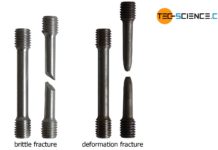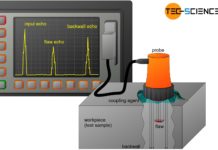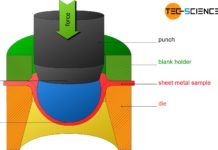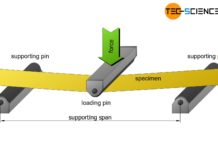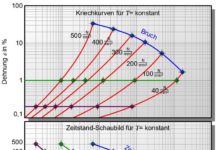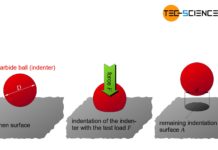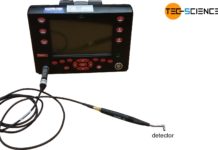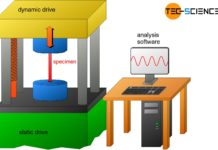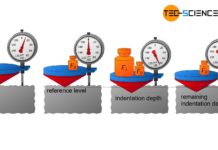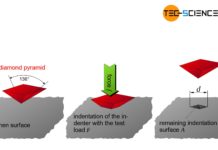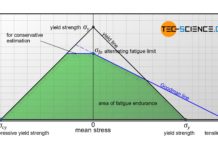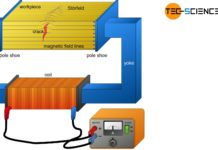Tensile test
The tensile test is used to determine the strength (yield point, ultimate tensile strength) and toughness (elongation at break) of a material!
https://www.youtube.com/watch?v=nOdcE2pJx2A
Setup
The tensile test is one of the most important testing...
Ultrasonic testing (UT)
Ultrasonic testing uses sound waves to non-destructively inspect a component for flaws.
Introduction
Ultrasonic testing is a non-destructive testing technique because the workpieces or components to be tested are not damaged during the...
Cupping test
In the cupping test according to Erichsen, the deep drawing behavior of a metal sheet is examined.
Sheets for deep-drawing applications must have very good cold formability, i.e. they must be able...
Bending flexural test
In a bending flexural test, a standardized specimen is bent under uniaxial bending stress until plastic deformation or fracture occurs!
https://www.youtube.com/watch?v=B-caaAtTsDk
Test setup
In the bending flexural test, a specimen is loaded under uniaxial...
Stress rupture test (creep rupture test)
The creep rupture test (stress rupture test) is used to measure the strength of materials that are subjected to constant stress at elevated temperatures.
Creep
If components are subjected to a constant tensile...
Brinell hardness test
With the Brinell hardness test, a carbide ball is pressed into the material. The indentation surface serves as a measure of the hardness!
https://www.youtube.com/watch?v=bXV6ZimFzws
Introduction
In many applications, components should have not only a...
Compression test
In the compression test, a standardized specimen is loaded under compressive stress until it breaks or until a first crack appears.
The testing of materials under compressive stress is carried out in...
Eddy current testing (ECT)
Eddy current testing is used to non-destructively inspect components for surface defects such as cracks.
With eddy current testing, electrically conductive materials can be examined for pores, inclusions and cracks in the...
Fatigue test
The fatigue test provides information about the strength of a material under continuously changing stress (dynamic load).
https://www.youtube.com/watch?v=V2FItB2m4lk
Introduction
The intensity of the stress increases slowly but steadily in the tensile, compression and flexural...
Rockwell hardness test
In the Rockwell hardness test, an indenter is pressed into the material. The indentation depth serves as a measure of the hardness!
https://www.youtube.com/watch?v=bXV6ZimFzws
In the Rockwell hardness test, the measure of the hardness...
Vickers hardness test
In the Vickers hardness test, a four-sided diamond pyramid is pressed into the material. The indentation surface serves as a measure of the hardness!
https://www.youtube.com/watch?v=bXV6ZimFzws
For the Vickers hardness test, a square base...
Fatigue limit diagram according to Haigh and Smith
Fatigue limit diagrams according to Haigh or Smith show the maximum yieldable stress amplitude as a function of the mean stress.
https://www.youtube.com/watch?v=pMUbK2DTJRs
Fatigue limit diagrams
Although the Wöhler curve is suitable for the evaluation...
Magnetic particle inspection (MPI)
With magnetic particle inspection (MPI), surface defects such as cracks of ferromagnetic components are made visible.
Introduction
Like the dye penetrant inspection, magnetic particle inspection is also a method for examining surface defects...

